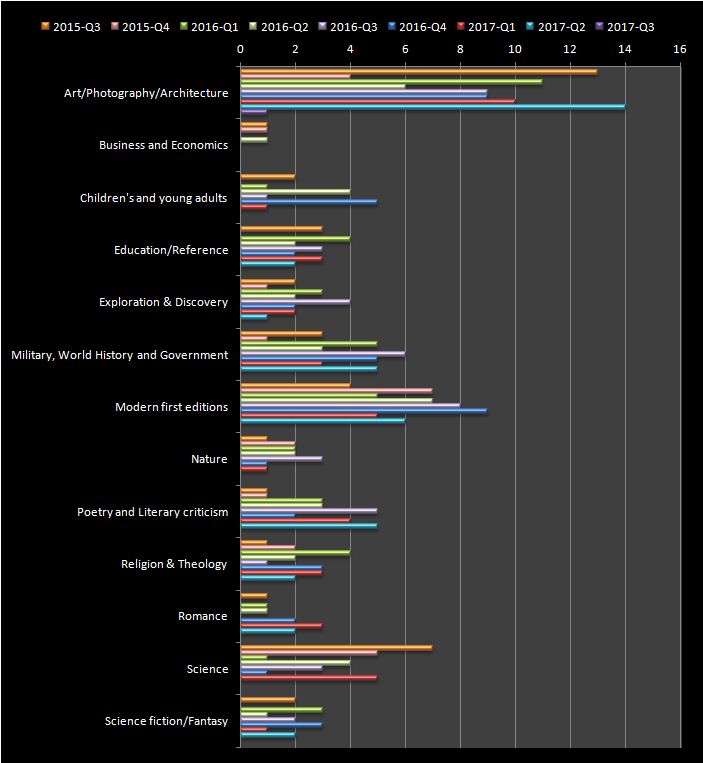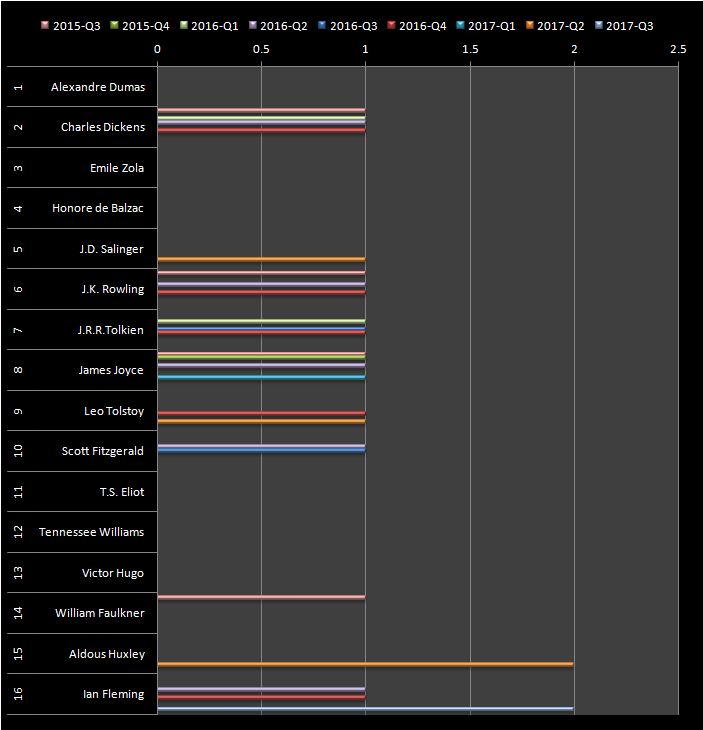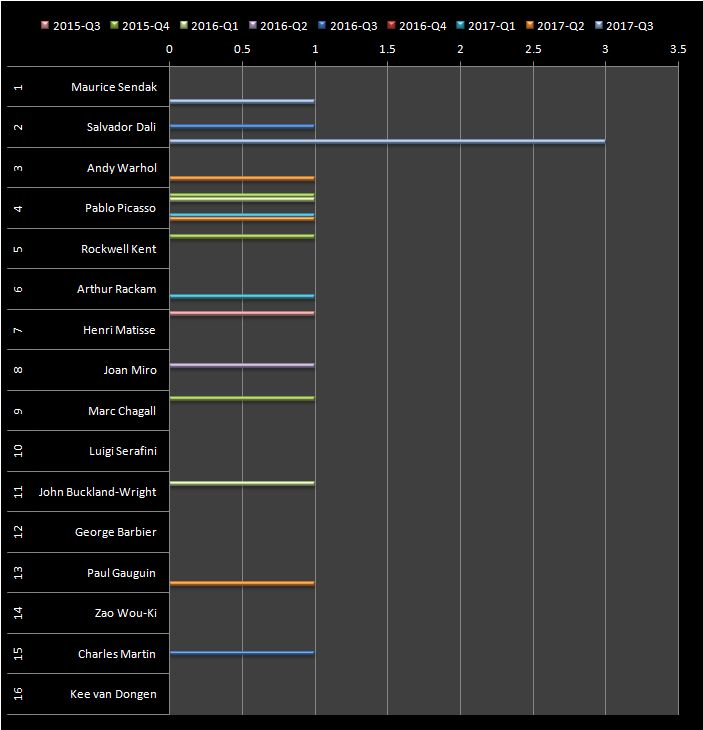The Rare Book Sale Monitor has given collectors new ways to structure their search for new additions to their collections using market trend indicators. Our view is that genre and author strategies can complement one another, and, that additional breakdowns can improve visibility and help structure collections to produce the desired results. In the case of the genre of Arts, for example, there is a great deal of variability across the composition of the genre. It is important for collectors of art books to have an additional index tracking the artists’ performance.
Genre and author indexes attempt to track the performance of a particular group of related rare books. Knowing the index on which a collector strategy is based, can give a better sense of which books will be tracked over a period. One simple way to illustrate this, is to imagine two equal-weight strategies; one tracking the genre of Arts, and another tracking the author J.R.R. Tolkien. Both strategies offer narrow exposure to a set of books. However, where the former strategy might focus on books from various artists, (with each book having a 2% weighting), the latter, might try to include a single author’s entire offering, (with each book having a 10% weighting). As you might expect, such differences in weighting – which apply no matter what type of groupings are considered – can affect the performance recorded.
Smart indexing, generally employs a rules-driven approach, wherein the weighting methodology determines what books are included and in what proportion. One outcome of this approach is that some authors might be more exposed to certain genres than others. The J.R.R. Tolkien index for example, can result in a relatively large exposure to the Modern First Editions genre index. Again, this should not be taken to mean a particular author is relying on a certain genre. Rather, if an author index gives less actively traded books a higher weighting, then the index might end up with larger weightings for particular titles. And, the index allocations can change, so that if trading picked up in one particular title, its weighting in a low-trading index would likely shrink.
The bottom line for us is to make sure we understand the index dynamics; thus, we can avoid any unintended concentrations in particular titles of the rare book market. We are hopeful that the addition of the Rare Book Sale Monitor – artist breakdown, will improve trend analysis for the Art genre and lessen the effect of out-of-balance concentrations.
Our new Artist breakdown focuses on a number of fairly often traded books which you may find described as:
“A wonderful combination of image and text, the illustrations exquisitely executed; finely executed pencil drawings to illustrate an as yet unidentified edition; a scarce edition of the author’s work, with a woodcut for each section; a series of engravings with descriptive text, illustrative of the life of the protagonist; a presentation with each plate printed on a different colored paper produced in a way that makes for a beautiful-looking book; a hieroglyphic epistle from the artist colored by hand; depictions of scenes chromolithographed throughout; copper engraved coats-of-arms; the silhouettes each facing a page of text depicting romantic illustrations; a contemporary lithograph led to speculation as to the motivation of the artist….”




{ 0 comments… add one now }
{ 1 trackback }